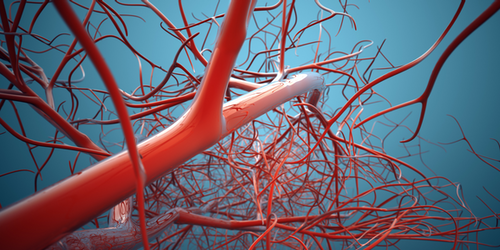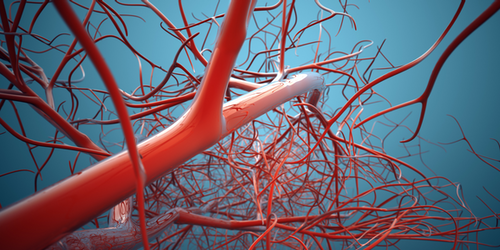Vessel Dilation Controls Metabolite Flow in the Brain
The brain’s tiny blood vessels form an intricate web-like network that transports metabolites and other substances including nutrients and hormones. But does the network’s specific pattern affect how it performs this vital role? Karen Alim of the Technical University of Munich and colleagues set out to answer this question by developing a theoretical model of the flow of metabolites in a brain-like network. They find that the network’s specific architecture does not matter when it comes to locally varying the supply of metabolites in the brain. Rather, vessel dilation acts as the metabolite “control knob.”
The researchers based their network on the vessel pattern of a rat’s brain. Then they studied how parameters such as the blood’s flow velocity and the metabolite’s uptake rate through the vessel walls governed the transfer of molecules from an individual vessel into the surrounding tissue. The team found that optimal transfer of metabolites occurs when the process is governed by advection. In this regime, when blood flow increases—something that happens when a blood vessel dilates—so too does metabolite transfer, with a 10% dilation leading to a 10% growth in metabolite supply. But surprisingly, Alim says, they found that the local network architecture around a given vessel played no role in increasing metabolite supply along that vessel: all that mattered was by how much the vessel itself dilated.
Changes in blood flow are used as a proxy for neural activity in brain imaging techniques like functional magnetic resonance imaging. Alim says that their model provides a tool to better quantify this process and potentially link the dilation of a single vessel to a spike in local brain activity.
This research is published in Physical Review Letters.
–Katherine Wright
Katherine Wright is a Senior Editor for Physics.





